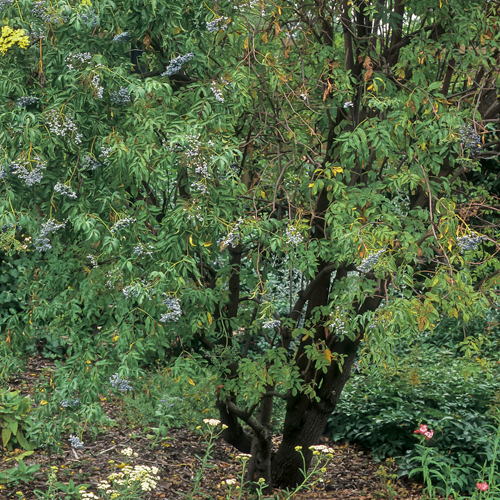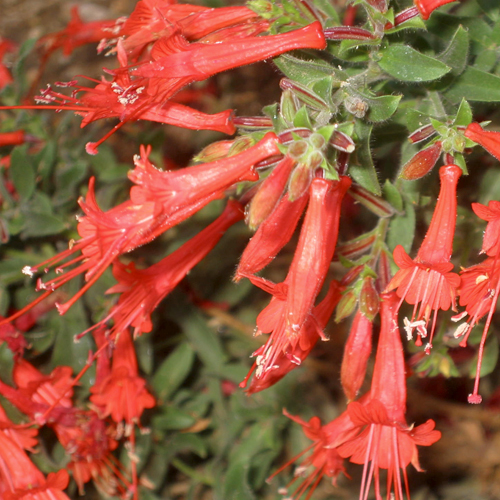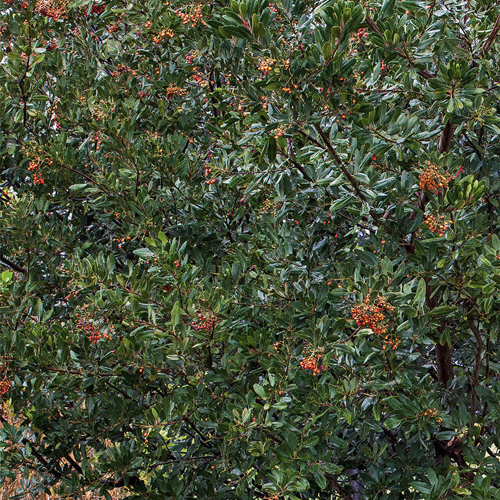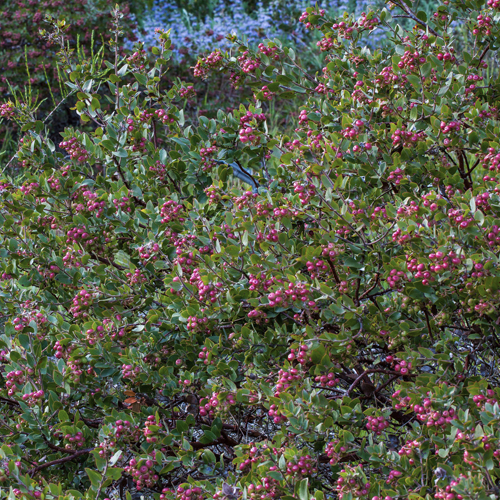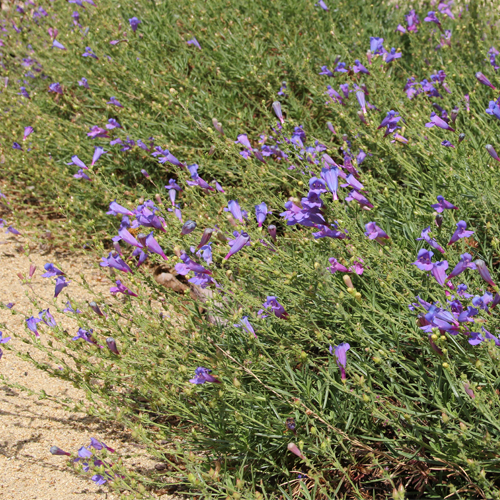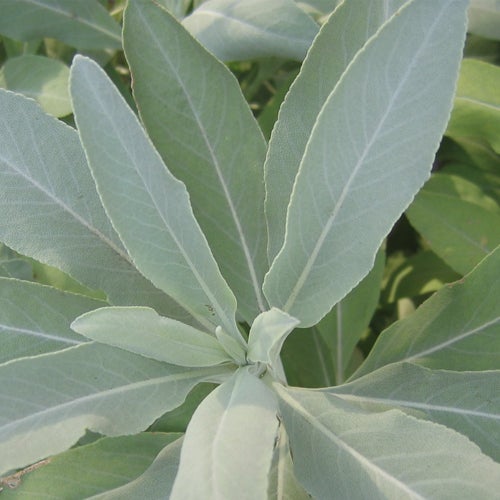Michael A. Hall Park Pollinator and Rain Garden
BACK TO FULL TOUR
Garden Features
Drought Tolerant
California Natives
Drip Irrigation
Pesticide Free
Rain Garden
Partner: Town of Windsor
The Micheal A. Hall Park Pollinator Garden and Rain Garden was installed in early 2024 by the Town of Windsor as part of a larger detention basin project taking place in the park. The pollinator garden was designed by Landscape Architect, April Owens, with the intention of using California native plants to create a thriving habitat for our local pollinators. The Town of Windsor is committed to creating drought tolerant living landscapes that promote both water conservation and biodiversity in our environment. We hope this garden inspires residents to apply similar functional and beautiful designs in their own home yards and gardens.
The Michael A. Hall Park Pollinator Garden features 100% California Native Plants. Key plants include Narrow Leaf and Showy Milkweed to support the Monarchs, California Fuchsia which attracts hummingbirds, and Groundcover Buckwheat which the Bees can’t get enough of. The garden is irrigated by a drip irrigation system, resulting in maximized water efficiency.
Just beside the pollinator garden is a beautiful and functional rain garden. The rain garden was installed as an offset to another town construction project and has resulted in a wonderful addition to the park. Using intentional topography, bio-engineered soils, and specially selected plants, the rain garden works to filter pollutants form the street out of storm water runoff and slowly infiltrate the water back into the ground.
In just one year, both of these gardens have grown into important habitat for birds, bees, and butterflies, and have served as important educational opportunities for the entire community.
On the day of the garden tour, the California Native Plant Society, the Town of Windsor and other will be present to display this new garden and help answer your own gardening questions.
Special Events
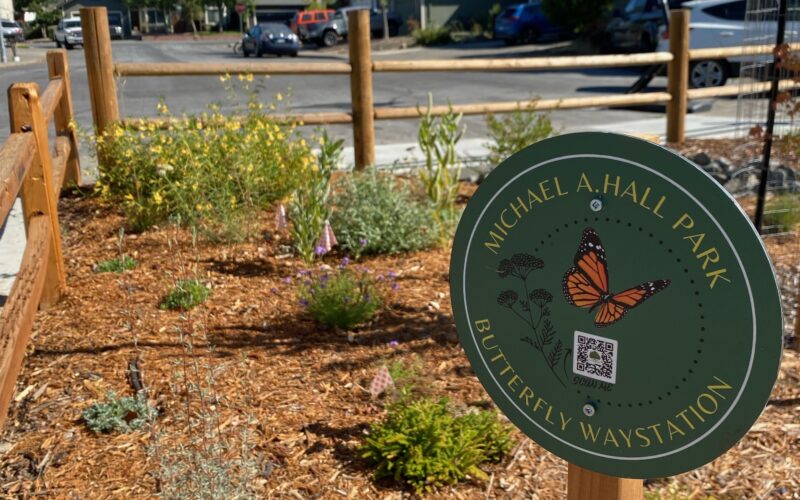
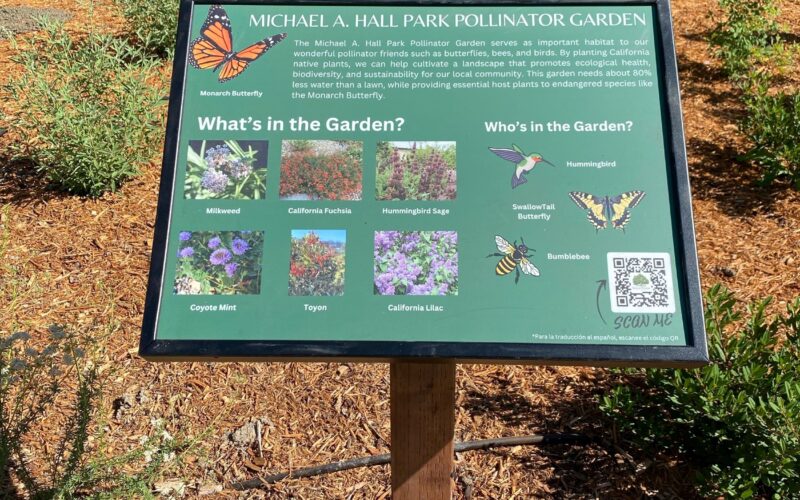
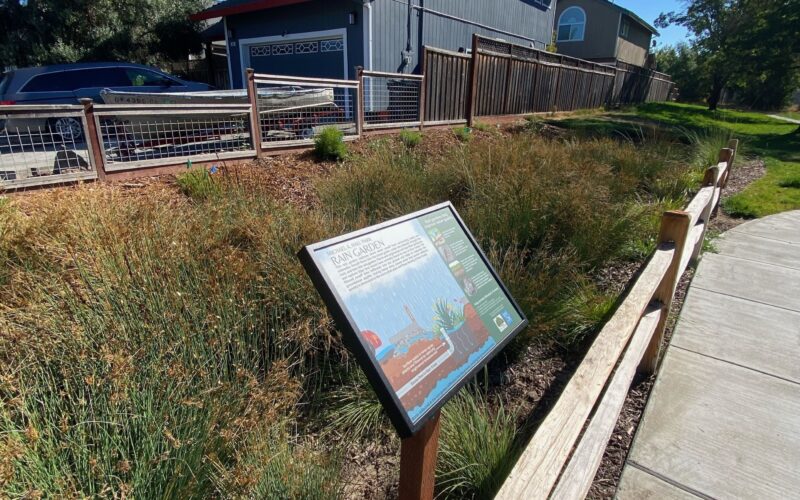
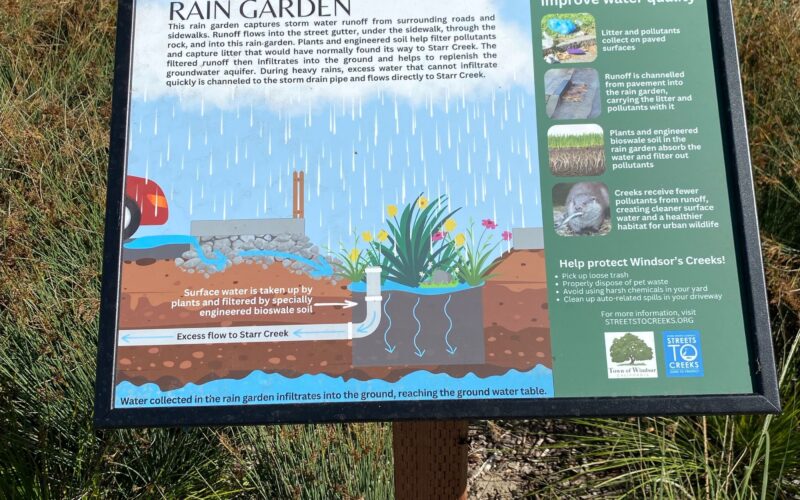
Plants in this Garden
Favorite Plants
Twinberry (Lonicera Involucrata)
Elderberry (Sambucus Mexicana)
Coffeeberry (Frangula Californica)
Manzanita (Arctostaphylos spp.)
Favorite Garden Suppliers
Cal Flora Nursery
2990 Somers Street Fulton
California Native Plant Society Milo Baker Chapter - Fall Plant Sale
900 Sanford Road Santa Rosa
Recommended Resources
Gardening Tips
Plant a Foundation of Shrubs
In a native garden, it is important to plant a foundation of shrubs like those on our favorites list so that in any season the garden looks beautiful, even when some of the plants may be deciduous. Using California native plants provides so much habitat, and it’s important to let them go to seed and be a little messy by typical standards. The delight of providing food for butterflies, bees, and birds is well worth it. We can all save biodiversity one garden at a time.
